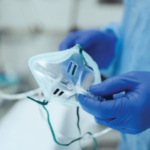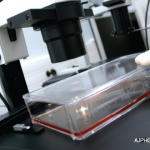Hypoxia is quite pronounced in psoriatic arthritis compared with RA. Angiogenesis is dysregulated in inflamed joints. “These blood vessels are not delivering enough oxygen to cells to overcome that hypoxic situation,” said Dr. Veale. Hypoxia not only induces angiogenesis but also pro-inflammatory mediators, and the invasion and migration of fibroblasts. This process is Notch dependent. “If we knock down the Notch, we can inhibit hypoxia-induced inflammatory mechanisms,” he said.
Many transcriptive factors are involved in cellular and other changes that occur due to hypoxia, including hypoxia-inducible-factor 1-alpha (HIF-1α), which is significantly upregulated due to a lack of oxygen. Prolyl hydroxylase domain proteins, including PHD2, which is prominent in RA, are an important area of research. When PHD2 is knocked down in RA, you see greater activation of HIF-1α, said Dr. Veale.
Interventions, such as TNF inhibitors, can reduce blood flow and metabolic activity in inflamed joints, including affecting oxygen levels, he said.2 These drugs alter cellular bioenergetics, and GLUT1, that key marker of metabolic activity in joints, goes down.
Energy Consumption
Inflammation uses up a lot of energy, said Stephen Young, PhD, FHEA, Reader in Rheumatology at the Institute of Inflammation and Ageing at the University of Birmingham in the U.K. “What’s using this energy?” Lymphocytes, resting T cells, and activated T cells are possible culprits. In sepsis or in high levels of trauma, you also see high energy levels. During sepsis, protein and energy metabolism are accelerated, and leucine and glucose levels go up, too. “Individual metabolites influence or vary in chronic disease.” For example, glutathione, a major antioxidant, is depressed in RA patients’ serum.
Metabolism leaves behind important clues to understand the inflammatory process. “Genomics and proteomics tell you what might happen, but metabolomics tell you what is happening or what did happen,” said Dr. Young. After an initial trauma, metabolomic analysis of blood serum shows a distinct, inflammation-related trajectory in metabolites following that injury, he said. In early arthritis patients, metabolites correlate with C-reactive protein levels in the blood, and these changes are linked to the inflammatory response. Creatinine is one possible important biomarker of this metabolic process.
After some acute damage to tissue, catabolic processes dominate, and then anabolism kicks in for tissue repair, followed by recovery. With the acute inflammation you see after a trauma or burn, there are both on and off processes, Dr. Young said. After a severe burn, for example, there are high levels of specific metabolites, and “there is some evidence for glycolysis and lipolysis in burn patients.” These may be markers of immune cell involvement or hypoxic metabolism in the damaged tissues, he said.


